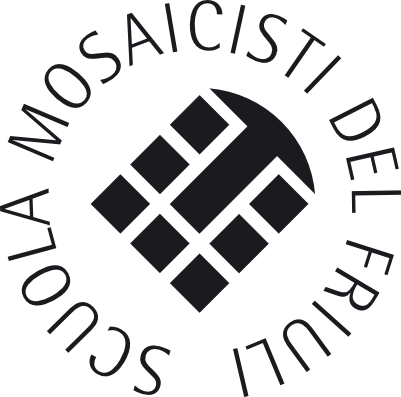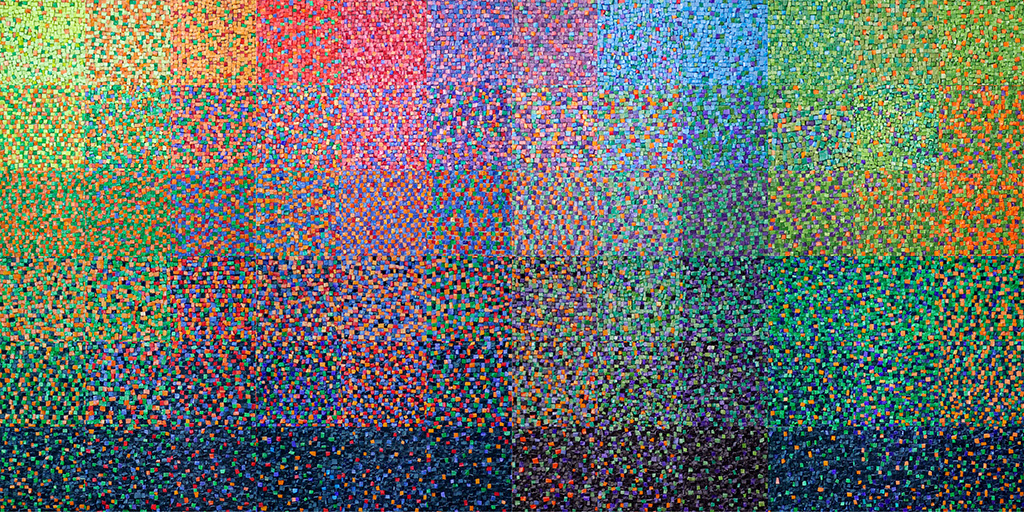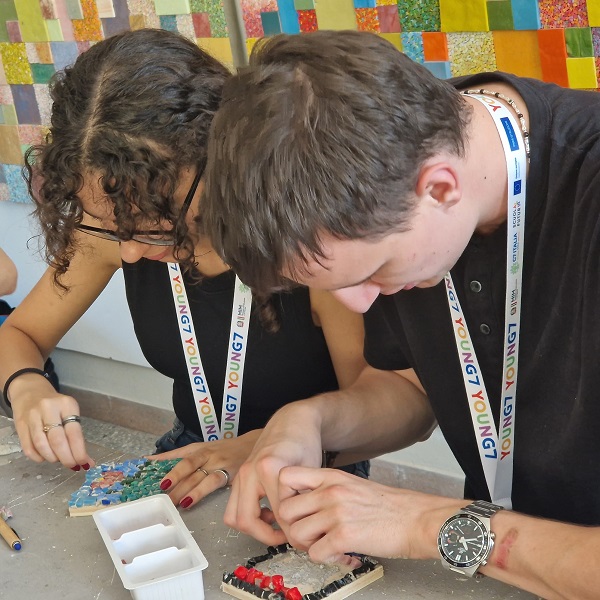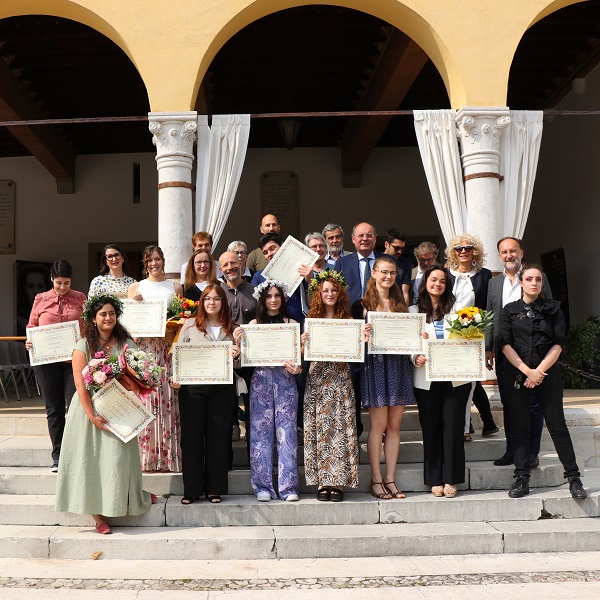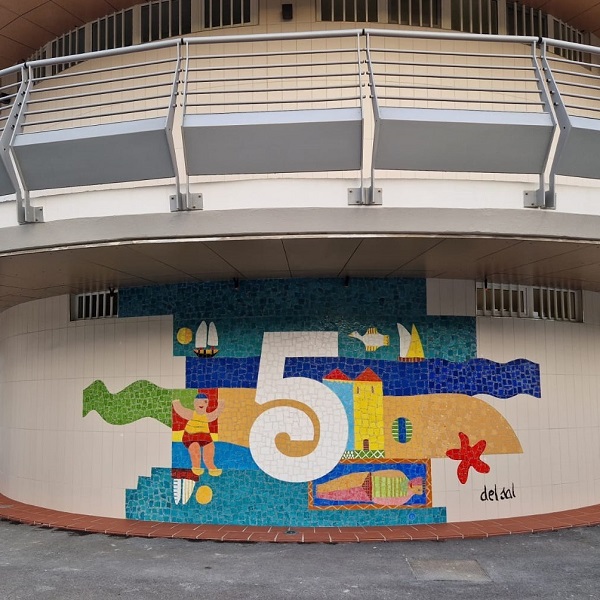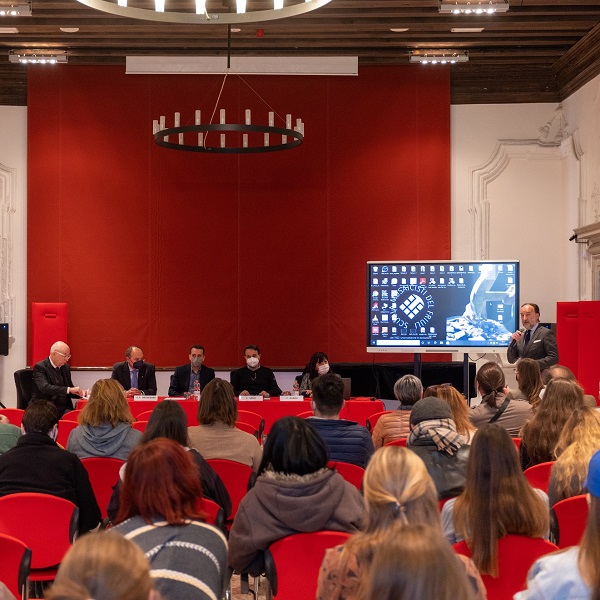
Becoming a mosaic artist: training in Italy
How do you become a mosaic artist? A round table organized by the Scuola Mosaicisti del Friuli this morning at Palazzo Tadea in Spilimbergo compared the main institutions that deal with the art of mosaic to make it a profession. Coordinated by Paolo Coretti, there were representatives of the Ravenna Academy of Fine Arts, the “Mario D’Aleo” artistic high school in Monreale (Palermo) and the Scuola Mosaicisti del Friuli. After a brief introduction by architect Coretti on the importance of an education that has the task, but also the moral obligation, to transmit the technical standards and those cultural principles underlying the quality and passion of “doing”, Paola Babini, didactic coordinator of the Academy of Fine Arts of Ravenna, she retraced the history of the institution. From the first mosaic course introduced in 1924, to the launch in 2008 within the Academy of an address dedicated to mosaic, but not exclusive: mosaic practice is in fact part of a curriculum that embraces several artistic subjects. The projects recently undertaken on the micro-mosaic and on the maintenance of the mosaic works of the Parco della Pace are fascinating.
Giovanni Alvich and Francesco Urso, teachers at the “Mario D’Aleo” artistic high school, illustrated the choices made following the national reform of 2000 which transformed their school, from an art institute, founded to cultivate and develop the mosaic, at artistic high school, with the consequent alignment with a ministerial program, the drastic reduction of laboratory hours, the cancellation of the mosaic between the teaching disciplines. Losing a school with such a specific address in a place where there is a strong mosaic tradition means neglecting the identity of a territory and its specificity, with the inevitable oblivion of that “know-how” that in Spilimbergo, at the Scuola Mosaicisti del Friuli, defined by Giovanni Alvich as the “university of mosaic”, continues to be preserved. Conservation and development that determine a renewal of this ancient art to the tastes and needs of the present. The director Gian Piero Brovedani highlighted precisely the peculiarity of the School: its being, for one hundred years, active in the field of professional learning, resulting today a reality of Higher Professional Training, internationally recognized and with independent management which allows it to respond immediately to the demands of the production and labor market.
The discussion also revealed what the profile of the mosaicist should be today: if he was once a simple performer who supported and translated with the tesserae the design of the creator artist, the “pictor imaginarius”, today more and more people try to form a complete figure that covers and knows how to play both roles. The mosaicist must have the skills to invent, design and create and this he can do if he manages to combine the laboratory hours with theoretical studies that over time must necessarily change to be in line with the evolution of materials, aesthetics, of expressiveness. For this reason the speakers were in agreement in speaking of system and language. The system must be a stable structure of relationships and exchanges that connects the educational institutions that operate in the mosaic field in order to offer innovation, promotion, research and above all benefits to the growth of the students’ skills. At the same time, we must look at the mosaic not only as a technique, but as a language, like painting and sculpture, where the elements that characterize it, the cut, the joint, the plasticity of the surfaces, the juxtaposition of tesserae qualify the mosaic. ‘expressiveness and communicative strength. The mosaic has its own rules, its own specificity and its own history that must be understood and deepened and this must be shared by all the educational institutions that deal with it.
It is in architecture that the mosaic shows its best evidence and what it is the relationship between space and mosaic is the topic of the meeting tomorrow afternoon, at 2.30 pm, also at Palazzo Tadea in Spilimbergo: a moment that opens a very rich afternoon which will then see at 18.00 the inauguration of the Pictor Imaginarius exhibition at the Gallery of the MScuola Mosaicisti del Friuli with the precious sketches and cartoons preserved in the School Archive, and to follow, thanks to the collaboration of the traders, the mosaic artisans and Confartigianato Imprese Pordenone, the contemporary mosaics in the windows of Corso Roma, to conclude, at 7.00 pm at Palazzo Tadea, with the issue of the commemorative stamp dedicated to the Scuola Mosaicisti del Friuli in the ‘Excellence of knowledge’ series.
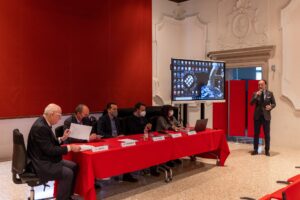
21 April 2022


